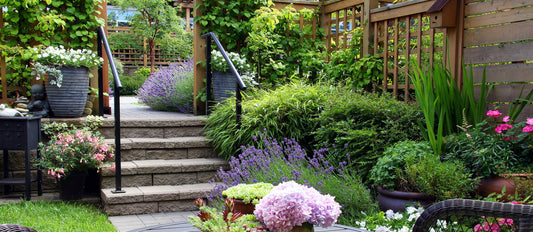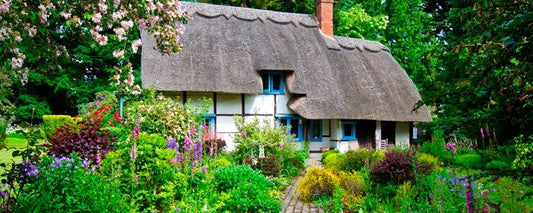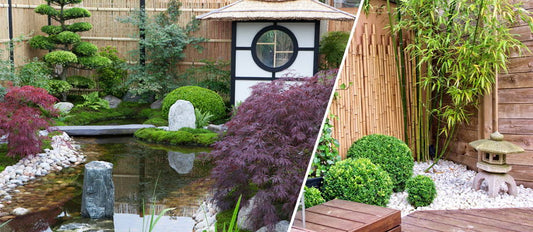There are many types of roses and they all have to be planted differently. Climbing roses should always be planted beside a wall or pergola. Large-flowered roses or spray roses, on the other hand, are perfect for borders. How you should space out your plants also differs. This blog offers you some tips for planting your roses.
Planting open-ground roses
Open-ground roses are bare-root roses without a pot that can be placed straight into the ground. They are thus not delivered in a nursery pot. Open-ground roses include spray roses, large-flowered roses and ground-covering roses.
When to plant
Open-ground roses can be planted between mid-October and late April. If there is no frost on the ground in winter, open-ground roses can be planted as normal. Planting roses when there is snow on the ground is not advised as this can damage the roots. Autumn is the best time to plant roses because they then have all winter to form roots.
Favourite spot
Choose a sunny spot for your roses. Ground-covering roses can grow in partial shade or even completely in the shade, unlike other open-ground roses. Do pay attention to what other plants you have in the border. Tree roots can take a lot of water and food from the soil, which your roses need.
How to plant
After purchase, the roots may have dried out a little. It's best to place your roses in a bucket of lukewarm water overnight before planting. Till the soil well before you start planting. The planting hole must be deep enough and wide enough for the roots to be placed into the ground.
Place the rose with the roots spread out at the right depth, which you can find on the plant label. The thicker part that the branches stem from (the grafting point) should be about 3–5 cm below the ground. Gently shake the rose to fill all the gaps between the roots with soil. Press down firmly and give it plenty of water. Pack a mound of earth around the rose. This is called 'earthing up' and protects the roots from frost in winter.
Plant ground-covering roses, spray roses and large-flowered roses 35–45 cm away from each other.
Planting climbing roses
The best thing about climbing roses is that you can plant them just about anywhere. They love to climb old hedges and fences, and can give unsightly walls a colour boost with ease. It is important to make sure that climbing roses are well protected from the wind, so choose a spot that isn't too breezy for your roses.
Planting climbing roses against a wall
A climbing rose can easily be planted against nearly any wall. The only walls you should avoid are walls that are very sheltered or face south. These walls can get too warm and cause the roses to dry out. To plant climbing roses against a wall:
- Attach a climbing frame to the wall. Leave 2 cm between the lattice and the wall for air circulation.
- Plant your roses about 30 cm away from the wall — any closer to the wall and the soil will be too dry. Apply the same planting technique as for an open-ground rose.
- Choose four or five main branches to tie your roses to the bars.
- Plant different roses at least one to two metres away from each other.
- Give them plenty of water!
Planting climbing roses along a pergola
Roses can also be grown on a pergola. To do this, plant several roses on both sides of the pergola so that they will come together to form a roof. Roses that are well placed along the structure of a pergola yield excellent results within a year. Within three years, you'll get the full effect: a colourful roof of roses.
Planting roses in a pot
In principle, all roses can also be planted in a nice planter. Unlike perennials, rose roots grow deep, not wide. Once their roots hit the bottom, the plants stop growing, so always make sure that you use a large pot and regularly adjust the pot size to the growth of your roses. Roses that don't grow any higher than 80 cm are the best suited for planting in pots. Please note: roses growing in a pot need even more water
To make it as easy as possible, here are some helpful tips:
- Make sure that you use a pot with drainage holes.
- Place a layer of pot shards or hydro grains at the bottom of the pot.
- Sprinkle a layer of rose potting soil over this.
- Make sure that the grafting point (the thicker part that the branches stem from) is also covered with rose potting soil to prevent frost damage to the plant.
- Fill up the rest of the planting hole and press down firmly.
- Give them plenty of water!
Roses in nursery pots
Roses in nursery pots can be planted almost all year round, except in periods of frost. Place the roses in a bucket of lukewarm water for half an hour before planting. Dig a spacious hole for planting and till the soil well. Remove the rose from the pot and place it at the right depth:
- Grafted roses in nursery pots are sensitive to frost at their grafting point (the thicker part that the branches stem from). This point should be about 3–5 cm below the ground when planting. Fill the planting hole up with improved soil, press down firmly and give it plenty of water. Pack earth around the roses to protect the grafting point.
- Roses in nursery pots that have been propagated from cuttings are not grafted and therefore have no grafting point. Make sure that the top of their root ball is just below the surface. Improve the soil and use it to fill the planting hole. Press down firmly and give it plenty of water.




